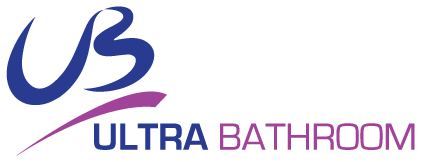How to Unblock a Shower Drain or Bath Drain: A Step-by-Step Guide
Posted by ilker Duymaz on
A blocked shower or bath drain can be a real nuisance, causing water to build up and potentially leading to unpleasant smells or even damage to your bathroom. But before you call in a plumber, you might want to try unblocking the drain yourself. With the right tools and some patience, it's a task that many homeowners can manage on their own.
In this blog post, we'll guide you through the process of unblocking a shower or bath drain step by step.

Gather your tools and materials:
Before you begin, make sure you have the following items on hand:
- Rubber gloves
- Plunger
- Screwdriver or drain cover removal tool (if needed)
- Flashlight
- Bucket or container for debris
- Drain snake or flexible cleaning brush
- Mixture of baking soda and vinegar or a commercial drain cleaner (optional)
Remove the drain cover: Put on your rubber gloves and use the screwdriver or drain cover removal tool to carefully take off the drain cover. Some covers may simply lift off, while others may require unscrewing. Inspect the drain: Use your flashlight to look inside the drain and identify any visible blockages. Hair and soap scum are the most common culprits. If you can see the obstruction, try to remove it with your gloved hands or a pair of needle-nose pliers.
Use the plunger: If the blockage is out of reach, place the plunger over the drain opening and make sure it forms a tight seal. Push down firmly, then pull up quickly. Repeat this process several times to create pressure that can help dislodge the clog.
Use a drain snake or flexible cleaning brush: If the plunger doesn't work, it's time to bring out the drain snake or flexible cleaning brush. Insert the tool into the drain, slowly pushing it through the pipe until you feel resistance. Rotate the snake or brush to break up the blockage, then carefully pull it back out. You may need to repeat this process a few times to remove all the debris.
Try a homemade or commercial drain cleaner (optional):
 If the clog persists, you can try using a mixture of baking soda and vinegar, or a commercial drain cleaner. Follow the manufacturer's instructions for the commercial cleaner, or pour one cup of baking soda down the drain followed by one cup of vinegar for a homemade solution. Allow the mixture to work for 15-30 minutes, then flush the drain with hot water.
If the clog persists, you can try using a mixture of baking soda and vinegar, or a commercial drain cleaner. Follow the manufacturer's instructions for the commercial cleaner, or pour one cup of baking soda down the drain followed by one cup of vinegar for a homemade solution. Allow the mixture to work for 15-30 minutes, then flush the drain with hot water.
Reassemble the drain cover: Once the blockage has been cleared, replace the drain cover and secure it with the screws or clips as necessary.
Test your handiwork: Turn on the shower or fill the bath to ensure that the water drains properly. If the water still isn't draining, you may need to repeat the steps or consult a professional plumber for assistance.
Conclusion: Clearing a blocked shower or bath drain can be a simple DIY task when armed with the right tools and knowledge. By following the step-by-step guide outlined in this blog post, you can effectively unblock your drain and restore your bathroom's functionality. However, if the blockage persists after attempting these methods, it's important to call in a professional plumber to address the issue and avoid further damage to your plumbing system. With regular maintenance and prompt attention to any drain issues, you can keep your shower or bath draining smoothly and prevent future blockages.
If you're experiencing unpleasant smells in your bathroom even after fixing the drain blockage, you might be dealing with a smelly sink. To learn how to address and fix this issue, check out our article on Smelly Bathroom Sink: How to Fix for some helpful tips and solutions.




